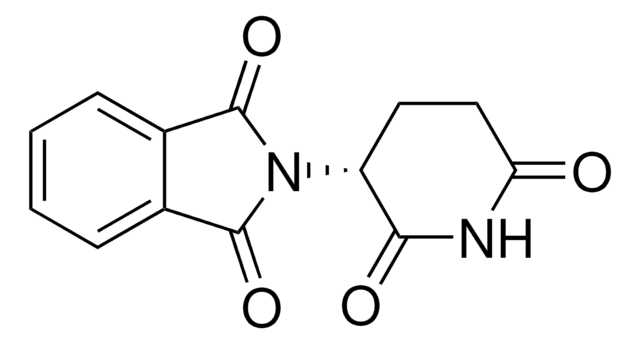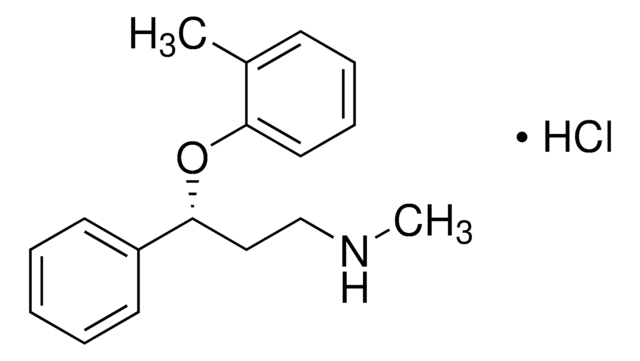T150
(−)-Thalidomide
>98%, solid
Synonym(e):
S(−)-2-(2,6-Dioxo-3-piperidinyl)-1H-isoindole-1,3(2H)-dione
About This Item
Empfohlene Produkte
ligand
thalidomide
Assay
>98%
Form
solid
Optische Aktivität
[α]23/D −62.6°, c = 2 in DMF(lit.)
Eignung der Reaktion
reagent type: ligand
Methode(n)
cell culture | embryo: suitable
Farbe
white
Löslichkeit
DMSO: soluble
H2O: insoluble
ethanol: insoluble
Ersteller
Celgene
SMILES String
O=C1CC[C@H](N2C(=O)c3ccccc3C2=O)C(=O)N1
InChI
1S/C13H10N2O4/c16-10-6-5-9(11(17)14-10)15-12(18)7-3-1-2-4-8(7)13(15)19/h1-4,9H,5-6H2,(H,14,16,17)/t9-/m0/s1
InChIKey
UEJJHQNACJXSKW-VIFPVBQESA-N
Angaben zum Gen
human ... LITAF(9516) , TNF(7124)
mouse ... Nos2(18126)
rat ... Nos1(24598)
Verwandte Kategorien
Allgemeine Beschreibung
Anwendung
Biochem./physiol. Wirkung
Leistungsmerkmale und Vorteile
Angaben zur Herstellung
Anwendung
Ähnliches Produkt
Signalwort
Danger
H-Sätze
Gefahreneinstufungen
Acute Tox. 4 Oral - Repr. 1B
Lagerklassenschlüssel
6.1C - Combustible acute toxic Cat.3 / toxic compounds or compounds which causing chronic effects
WGK
WGK 3
Persönliche Schutzausrüstung
Eyeshields, Gloves, type P3 (EN 143) respirator cartridges
Analysenzertifikate (COA)
Suchen Sie nach Analysenzertifikate (COA), indem Sie die Lot-/Chargennummer des Produkts eingeben. Lot- und Chargennummern sind auf dem Produktetikett hinter den Wörtern ‘Lot’ oder ‘Batch’ (Lot oder Charge) zu finden.
Besitzen Sie dieses Produkt bereits?
In der Dokumentenbibliothek finden Sie die Dokumentation zu den Produkten, die Sie kürzlich erworben haben.
Chromatograms
application for HPLCapplication for HPLCUnser Team von Wissenschaftlern verfügt über Erfahrung in allen Forschungsbereichen einschließlich Life Science, Materialwissenschaften, chemischer Synthese, Chromatographie, Analytik und vielen mehr..
Setzen Sie sich mit dem technischen Dienst in Verbindung.








